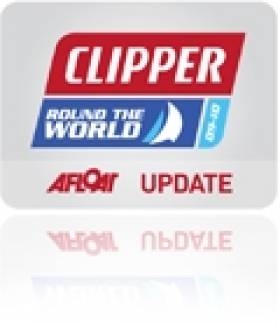Displaying items by tag: MOB
Clipper Race Developing New Automatic AIS Beacon
#clipper – One year after an MOB in the middle of the Pacific Ocean, during the Clipper 2013-14 Round the World Yacht Race, in which a crew member was successfully rescued after 100 minutes in the water, organisers have revealed the development of a new automatically activated AIS beacon.
"It was a result of the crew member's experience, the fact that he could have been knocked unconscious when he hit the rudder, the fact that his lifejacket did not automatically inflate (we found the reason for this later) and that his beacon was initially switched onto test instead of activate, causing a life threatening delay, we decided to try to create an automatically activated beacon," explained Clipper Race founder and chairman Sir Robin Knox-Johnston.
"After close collaboration and intense development between the Clipper Race team, technology partner Spinnaker International and McMurdo Group, I am glad to say that we now have a prototype, using the McMurdo AIS Beacon and will be making sea trials in mid-April. We were lucky to get Andrew back and at the Clipper Race we don't believe in relying on luck where safety is concerned."
Andrew Taylor, 47, was hit by a huge wave and swept overboard on 30 March 2014 from the Derry~Londonderry~Doire entry. His incredible man overboard rescue is told in a book launched today called '179W – One Seven Nine West' named after the exact co-ordinates where he fell overboard; it details his fight for survival and pays tribute to the training, team and equipment that saved his life.
Andrew commented: "Many of the fleeting moments on that fateful day could easily have ended differently. As could have the subsequent story's ending. I genuinely believe, as a result of some of the outcomes of this incident, that lives will now be saved in the future and for both this, and escaping with my own life, I am totally humbled and shall be eternally grateful to very many special people."
When Andrew activated his McMurdo AIS MOB device after about an hour in the water, his crew was able to pinpoint his exact location and come to his aid faster than following their search pattern; vital minutes for Andrew's survival after being in the water for so long.
"We are delighted to be celebrating Andrew's amazing story here today," said Jean-Yves Courtois, CEO of Orolia, McMurdo's parent corporation. "At McMurdo we strive to make it possible for people to do what they love, whether it's sailing, flying or exploring, and to keep them safe while they pursue their dreams. Andrew's story exemplifies this – his crew and our technology kept him safe to race another day."





























































